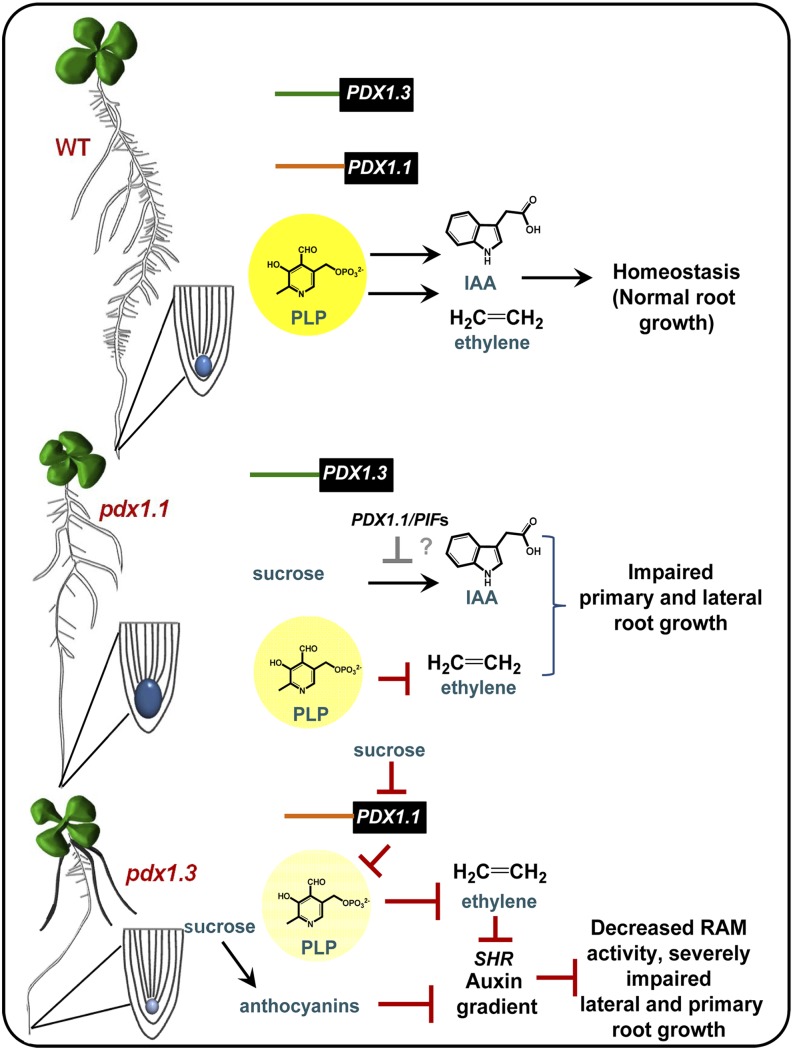Figure 8.
Consequences of a deficit in PLP for hormone homeostasis and root development in Arabidopsis. The top scenario indicates that, in the presence of sufficient PLP levels (yellow), as supplied by the catalytic action of PDX1.1 and PDX1.3, homeostasis of the two phytohormones auxin and ethylene is maintained for normal root development. The region around the root tip is amplified, part of which is shaded in blue to reflect arbitrary auxin levels at this stage of growth. The promoter regions of PDX1.1 and PDX1.3 are depicted by differently colored lines, to reflect their differential expression, while coding regions are shown as black boxes. The middle scenario illustrates observations in the pdx1.1 mutant. In this scenario, there is a mild deficit in the production of PLP (paler yellow; note that PDX1.3 is still expressed), which in turn affects ethylene production. However, auxin levels are much higher (shaded dark blue) than in the wild type, induced by the presence of Suc. The loss of PDX1.1 contributes to the inability to repress the accumulation of auxin as a function of Suc and may be related to the misregulation of PIF proteins. Overall, this results in impaired primary and lateral root growth. The bottom scenario depicts the situation in pdx1.3. In the presence of Suc, the expression of PDX1.1 is down-regulated and anthocyanins accumulate. The decrease in expression of both PDX1.3 and PDX1.1 leads to a major deficit in PLP production (pale yellow), which represses ethylene production. The combined deficit in ethylene production and the accumulation of anthocyanins negatively affects auxin biosynthesis (shaded pale blue) and its distribution. The expression of SHR is also decreased. Root apical meristem (RAM) activity is impaired, as reported (Chen and Xiong, 2005), leading to primary and lateral root growth defects and the appearance of anchor roots (dark gray).

